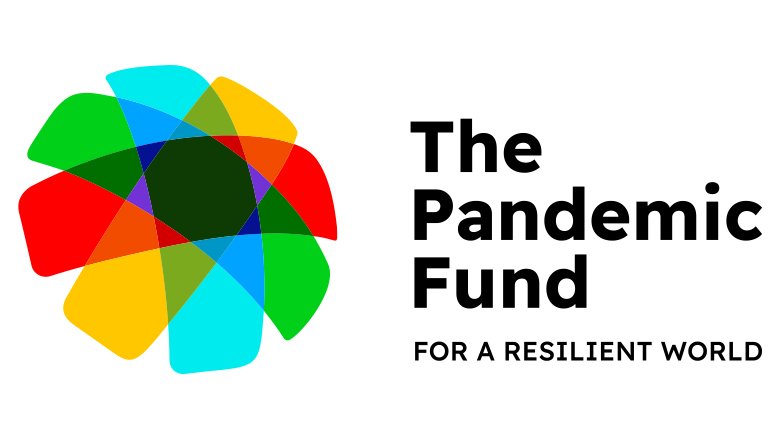This is one of 19 projects to which a grant was awarded by the Pandemic Fund under the First Call for Proposals. For information on the full set of projects supported by the First Call for Proposals, please refer to this press release.
Background
Zambia has a high burden of communicable disease, including malaria, HIV/AIDS, and tuberculosis. Bordered by eight countries, it lies in a region rife with disease outbreaks. Within Zambia, the expansion of agriculture, tourism, and mining increases and changes the human-animal-environment interface in ways that could potentially lead to the emergence and re-emergence of infectious diseases with pandemic potential. Zambia’s 2017 Joint External Evaluation and other evaluations identified critical gaps in Zambia’s capacity to prevent, detect, and rapidly respond to public health risks. The Zambia Multisectoral Pandemic Preparedness and Response Project, supported by an $18.9 million grant from the Pandemic Fund, is designed to build on existing strengths and address gaps found in these evaluations. It is a partnership between the Zambian Ministries of Health, the Zambia National Public Health Institute (ZNPHI), the Ministry of Green Economy and Environment, the Zambia Environmental Management Agency, the Ministry of Fisheries and Livestock, the Department of National Parks and Wildlife, civil society organizations, and the two Implementing Entities (IEs), FAO and WHO. It has $12.5 million in co-financing.
Project objectives
The Project aims to strengthen the national surveillance, laboratory systems, and workforce capacity for preparedness and response to public health events, especially those requiring a One Health approach. This will include drivers of public health events at the human-animal-environment interface as well as climate-related factors. An integrated approach with experts and professionals with different backgrounds and scientific disciplines will be critical.
Implementation arrangements and key components
FAO and WHO, as Implementing Entities, will co-chair the governance structure of the Project, with membership from key stakeholders in human health, animal health, and the environment. ZNPHI will provide secretariat and coordination functions. In addition to agency involvement mentioned earlier, civil society groups, displaced and marginalized communities, and other vulnerable and affected communities will participate in the sensitization and awareness of the vulnerabilities of these groups in pandemic prevention, preparedness, and response. The Project has three main components. Implementing Entity supported is indicated in each component.
Strengthening surveillance and early warning systems. This component supports the integration of reporting tools in a combined electronic Integrated Disease Surveillance and Response Platform that incorporates the WHO-Net and One Health Platform for better surveillance and data sharing on antimicrobial resistance (AMR), hospital-acquired infections, and infections and antimicrobial use in the animal sector. Sentinel sites (hospitals, clinics, and health centers) will be established or scaled up to monitor and report disease trends in real time, to be integrated into a national early warning system. To meet surge capacity needs, the component includes procurement of commodities (such as personal protective equipment) and services. The component also will build core surveillance capacity for points of entry including airports, ports, and ground crossings (WHO).
Strengthening laboratory systems. This component supports the procurement of reagents and consumables for identification, testing, and sequencing of multiple pathogens, and periodic training, technical support, and supervisory visits. The component will strengthen systems for certifying and accrediting laboratories to national and international standards for animal health. It will strengthen bacteriology testing and AMR sentinel surveillance. It will increase the pan-pathogen genome sequencing capacities of provincial labs. Support will be provided in the area of biosafety/biosecurity for human, animal, and agriculture facilities as well as veterinary diagnosis. The component will also support existing sample transportation systems (FAO, WHO).
Strengthening the One Health workforce. This component will support the development and implementation of a human resources surge strategic plan to respond to pandemics. An electronic roster of surge staff in human, animal, and environmental health will be created for those in charge of managing emergencies at a national and sub-national level. Training of surge staff will focus on the range of critical skills that will be needed. Training will also be provided to medical microbiologists to close the critical human resources shortage in AMR, antimicrobial stewardship, and infection prevention and control surveillance. This component proposes to leverage existing telementoring platforms to provide capacity building in pandemic preparedness and response-related topics at low cost (FAO, WHO).
Expected outcomes
The Project’s key expected outcomes include:
enhanced surveillance and response systems
coordinated prevention, preparedness and response to public health events of concern
multi-disciplinary workforce development for rapid disease detection and containment
surge capacity created to respond to public health emergencies
Key Financial Statistics
| Amount Approved (US$) | Total Co-financing (in kind & in cash) (US$) | Total Co-investment (in kind & in cash) (US$) |
| 18,874,603 | 12,500,000 |
For inquiries about this project: Roma Chilengi - chilengir@yahoo.com
For media inquiries: Anita Rozowska - arozowska@worldbankgroup.org
For general inquiries: the_pandemic_fund@worldbank.org

